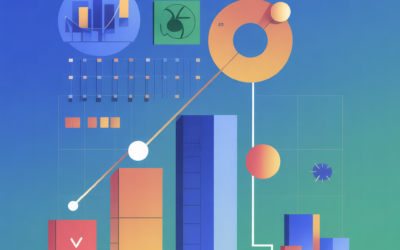How to Use AI to Build a Buyer Profile That Converts
You can’t sell to people you don’t understand. That’s the truth behind every flopped launch, dead list, or content that falls flat.
The buyer profile isn’t a marketing formality. It’s the core of everything that works.
But most solo marketers build theirs off guesswork or what they think their audience should want. That’s where AI flips the game.
Instead of building a profile from your own assumptions, you can use AI to mine the language, problems, goals, and buying behavior of real people.
You can feed it prompts that dig into patterns you wouldn’t see on your own. You can turn vague audiences into specific humans with urgent needs and clear goals.
And once you do that, your copy sharpens, your offers tighten, and your traffic starts sticking.
Start with one clear product or idea you want to promote. This isn’t about finding a generic avatar.
It’s about reverse-engineering the buyer who will say yes to this specific solution.
That level of clarity matters. You’re not just describing a person.
You’re building a profile that makes everything easier—writing emails, building opt-ins, shaping bonuses, and even picking the right language on your sales page.
Step one is to prime the AI with context. Give it your product, what it helps with, and how you think people are using it. You don’t need to have the perfect offer.
You just need to be clear about what it does.
Prompt it like this:
“I’m selling [brief product description]. Help me build a detailed buyer profile that includes pain points, goals, daily struggles, and objections. Focus on emotional triggers and decision-making habits.”
What comes back is usually better than anything you’d brainstorm alone. But don’t stop at one answer.
Ask follow-up questions.
“What keeps this person awake at night?” “What other products have they bought that failed them?” “What myths do they believe that I need to dismantle?”
Treat AI like a thinking partner. Keep drilling until the profile starts to feel like someone you know.
Next, take that profile and push it into more emotional territory. AI’s default tone can be a little formal. You want raw.
Ask it:
“Describe this buyer’s inner dialogue when they’re frustrated that nothing is working.”
Or
“Write a rant this buyer might post in a private group when they’re at their breaking point.”
Now you’ve got the stuff that actually converts—language that hits the gut, not just the mind.
Now that you know the buyer emotionally, get strategic. What platforms are they using? What types of content do they consume?
What phrases do they search when they’re desperate for a solution?
AI can scrape together the behavioral patterns that shape how this person finds, evaluates, and buys what you’re offering.
Prompt:
“Tell me how this person researches solutions online. Where do they go? What do they trust? What do they ignore?”
Or
“Give me five search queries this buyer might type into Google when they’re ready to fix this.”
This helps you figure out not just what to say but where to show up. You stop spraying content across platforms hoping something lands.
You go where the buyer already is—saying what they’re already thinking.
After that, run a full objection sweep. Don’t guess why someone won’t buy. Let AI give you the real reasons people hesitate.
Prompt:
“What would stop this person from buying this product, even if they want the result?”
Then ask:
“Which of these objections are fear-based? Which are logical? Which come from past failures?”
That breakdown matters. You handle each type differently. Fear-based objections need reassurance. Logical ones need proof.
Past-failure objections need a stronger bridge.
Take those objections and feed them into prompt frameworks for copy.
“Write an email that addresses the fear-based objection: ‘What if I waste more money and nothing changes?’”
Or
“Write a bullet point that flips the objection: ‘This won’t work for someone like me.’”
You’re not just building empathy. You’re building conversion tools straight from the buyer’s brain.
Once the emotional, strategic, and objection data are laid out, ask AI to wrap it into a usable buyer profile. But not the boring kind with fake names and hobbies.
Prompt:
“Create a no-fluff buyer profile summary I can use for writing offers and emails. Include core problem, desired result, buying behavior, and emotional triggers. Leave out demographics unless they’re relevant.”
That last part is important. Don’t pad the profile with fluff.
If you’re selling a course about making digital products, it doesn’t matter if your buyer likes cats and iced coffee unless that shapes how they buy.
Now you’ve got a profile that’s clear, emotional, and action-ready. But you can still push it further. Ask AI to help you niche it down.
“Based on this profile, what subgroups of buyers might respond to slightly different angles of this offer?”
You’ll get variations like beginners vs. burned-out pros, or people with more time than money vs. people with more money than time.
Each variation gives you an excuse to market the same product with different messaging.
Here’s where things get powerful. Use those variations to run campaign prompts.
“Write a sales page headline targeting the buyer who’s tried everything and still failed.”
Or
“Write an email for the subgroup that’s time-starved but willing to spend money to speed things up.”
You’re not reinventing the wheel. You’re just speaking more directly to the people already leaning in.
And if you want to go one level deeper, use AI to analyze your own past content or product reviews.
Feed in the text from comments, testimonials, or email replies and say,
“What patterns do you notice in what people struggle with before buying? What do they say about the results afterward?”
That turns your own audience into a data set—and AI into the interpreter.
All of this leads to a single advantage: confidence. When you know exactly who you’re talking to, and why they’re paying attention, everything sharpens.
Your hooks get tighter. Your content gets traction. Your funnel finally feels like it’s made for someone—not just blasted into the void.
Too many marketers treat buyer profiles like a worksheet to fill out and forget. They do it once, check the box, and wonder why nothing converts.
But with AI, you can make this part dynamic. You can update it monthly. You can adjust it with every offer.
You can spot shifts in behavior or objections and tweak faster than ever before.
Use AI for what it’s best at—recognizing patterns, interpreting behavior, and spitting out ideas that you can refine. Don’t let it guess your buyer for you.
Let it respond to what you already know, then make it sharper. Talk to your buyer through AI like you’re prepping for a one-on-one pitch call.
The more honest and specific you get, the more powerful the results.
You don’t need to guess anymore. You don’t need to copy what some course taught you about avatars five years ago.
You’ve got a tool that can adapt, learn, and clarify in real time.
Put it to work. Your buyer’s already out there, refreshing their inbox, checking their phone, and hoping someone finally understands what they’re dealing with.
Make sure when they see your message, they feel like it was written just for them. Because now, it actually is.









0 Comments